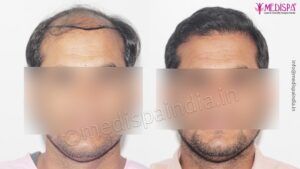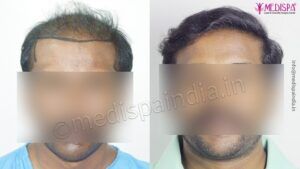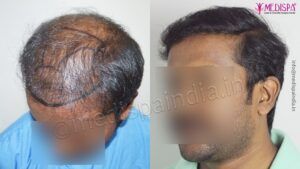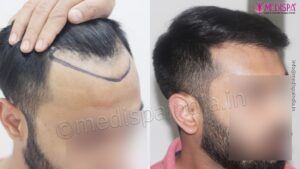
With the rising frequency of hair loss in recent years, there has been a surge in interest in which approach to employ to treat hair loss. Is it better to try a hair transplant or use more primitive alternatives like synthetic hair? This, and a slew of other questions, kept the patients’ minds occupied. Prosthetic hair and hair transplant alternatives abound in the age of digital media, social networks, and even print or other forms of media. It’s understandable that you’d be wondering about which operation is ideal for you and how it should be carried out.
We hope to describe the basic treatment techniques of two alternatives in this article Hair transplantation and prosthetic hair are two options that make it easier for you to decide.
Option 1) Prosthetic hairs
Prosthetic hairs, also known as patches or hair patches, are a non-surgical process that is customised for each patient. The patch resembles a clump of hair composed of a specific substance that is surrounded by scalp skin. It’s made that way in order to blend in and appear unnoticeable. Artificial hair or actual human hairs are put into a film of specific material according to the geometry of the bald area. Hair patches can look very natural depending on the quality of the specialised material utilised.
The texture and colour of the hair is usually quite similar to the patient’s natural hair and skin tone. Because the entire patch is air breathable, it can be worn at night, while swimming, or in the shower. However, every 6-12 months or so, the need for replacement arises.
Prosthetic hairs are prepared in a number of ways, including:
- After obtaining an impression, the moulding procedure is used to form the basis.
- A hypoallergenic, neutral, biocompatible, and inert substance or cloth is used to create the basis.
- The hairs are styled to match the aesthetics of the bald spot.
Option 2) Hair transplantation
Hair transplantation is a minimally invasive outpatient surgical treatment that includes collecting hair grafts from the donor area, which contain permanent DHT resistant hair follicles, and transplanting them to the bald area. Because the technique uses solely the patient’s natural hair, the results are extremely natural-looking and long-lasting. Furthermore, the donor location from which the follicles are extracted should have appropriate hair follicle density and quality. The treatment might take anywhere between 4 and 8 hours, depending on the number of hair grafts required and the technique used to complete the procedure.
FUT and FUE hair transplant techniques are among the methods utilized to carry out the treatment. The graft harvesting procedure varies between these approaches, and each patient chooses one based on their situation and needs. Complete results usually take 10-18 months to manifest after therapy.
The entire hair transplant technique is broken down into the following steps:
- Hair trimming according to the procedure used to accomplish the hair transplant
- Both the donor and the receiver are given local anesthetic.
- Hair grafts are taken from the donor locations, which are usually the back and sides of the head or other parts of the body.
- Slits are made in the bald area where the hair transplants will be transplanted.
- Hair grafts are implanted in the desired bald area, taking into account the hairline design.
- Post-operative instructions and, if necessary, PRP therapy
- Follow-up actions
Hair transplant versus prosthetic hair
Let’s look at the facts about whether you should go with hair transplants or synthetic hair.
- Permanency of Outcomes: Hair transplant delivers lasting results over synthetic hair, which is only a temporary treatment option. Prosthetic hair would necessitate a lot of upkeep and replacements.
- Aesthetic and natural-looking results: Because the hair transplant technique uses your own hair, natural-looking results are almost guaranteed. Because artificial hair or someone else’s hair is used in the process, you can get the best match with prosthetic hair.
- Invasiveness: Unlike synthetic hair, which is noninvasive, hair transplant is a minimally invasive surgical process.
In terms of outstanding services and state-of-the-art facilities, the Medispa clinic for hair transplant in Jaipur and Delhi is well ahead. Furthermore, the hair transplant cost in Jaipur is relatively low, with high-quality but low-priced hair transplants available at Medispa Clinic. Over the last 20 years, we’ve helped over 10000 people with hair loss, and our satisfied customers are proof of our success.
Make an appointment at the medispa hair transplant clinic in Jaipur or Delhi now for an amazing hair transplant.







